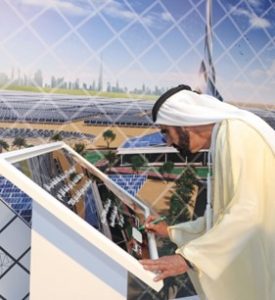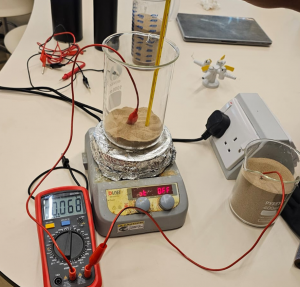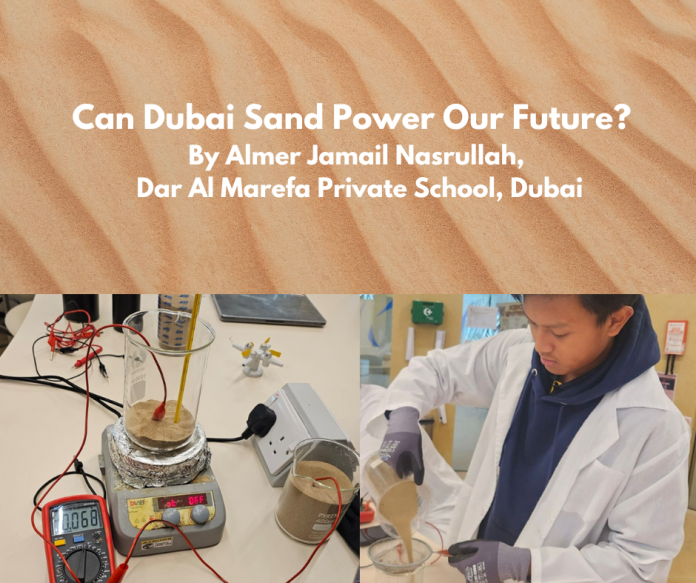 I’m 16-year-old with a strong passion for engineering and technology. Ever since I was young, I’ve been passionate about building models from materials like Lego and cardboard. During my MYP years, I created numerous physical models and prototypes, which led to winning an award in an online STEM competition in grade 8 for the best prototype of a drone designed for Mars exploration. This combination of skills has allowed me to explore various projects involving technology, coding, and prototype making. With my sand battery idea, I was able to receive an award in an exhibition from STEM Best Practice under the supervision of Mrs. Nadine Baki, the STREAM and AI coordinator. I am truly honored and proud of my achievement and will continue to strive in the STEM industry!
I’m 16-year-old with a strong passion for engineering and technology. Ever since I was young, I’ve been passionate about building models from materials like Lego and cardboard. During my MYP years, I created numerous physical models and prototypes, which led to winning an award in an online STEM competition in grade 8 for the best prototype of a drone designed for Mars exploration. This combination of skills has allowed me to explore various projects involving technology, coding, and prototype making. With my sand battery idea, I was able to receive an award in an exhibition from STEM Best Practice under the supervision of Mrs. Nadine Baki, the STREAM and AI coordinator. I am truly honored and proud of my achievement and will continue to strive in the STEM industry!
Have you ever thought about if the vast, sun-drenched deserts of Dubai could hold the key to a cleaner energy future? With the global push toward sustainable energy, innovative solutions like sand batteries are emerging to address the growing need for renewable energy storage. Could something as simple as sand become a cornerstone in our fight against climate change?

The Problem: Climate Change
The world is facing a critical challenge, how can we meet the increasing energy demands without worsening climate change? Fossil fuels, the dominant source of energy, are responsible for significant carbon emissions, contributing to global warming and numerous environmental disasters. This issue affects everyone from individuals who suffer health consequences of pollution to governments struggling to meet carbon reduction targets. Future generations, too, will bear the brunt of today’s unsustainable practices.
Current solution in Dubai: Mohammed Bin Rashed Solar Park
While renewable energy source like solar have made great impact, the come with its own challenges, particularly in energy storage. Current solution in Dubai can be the Mohammed Bin Rashed Solar Park, one of world’s largest solar energy projects. It has a capacity of 5,000 MW and uses a concentrated solar power (CSP) system. The CSP is optimized for the UAE’s climate, harnesses year-long sunshine and clear skies to function optimally, with excess energy. Currently, the CSP relies on molten salt for energy storage. This system has significant drawbacks. Molten salt requires complex and expensive infrastructure to maintain high temperatures, and its corrosive nature adds to maintenance challenges, not to mention as well the cost needed to do so. These factors contribute to the reduce of efficiency and sustainability, raising concerns about its long-term viability in Dubai’s desert climate.
challenges, particularly in energy storage. Current solution in Dubai can be the Mohammed Bin Rashed Solar Park, one of world’s largest solar energy projects. It has a capacity of 5,000 MW and uses a concentrated solar power (CSP) system. The CSP is optimized for the UAE’s climate, harnesses year-long sunshine and clear skies to function optimally, with excess energy. Currently, the CSP relies on molten salt for energy storage. This system has significant drawbacks. Molten salt requires complex and expensive infrastructure to maintain high temperatures, and its corrosive nature adds to maintenance challenges, not to mention as well the cost needed to do so. These factors contribute to the reduce of efficiency and sustainability, raising concerns about its long-term viability in Dubai’s desert climate.
The Sand Battery: A Potential Game-Changer
Introducing the sand battery – a technology that uses sand to store excess energy from the concentrated solar power (CSP). This sand battery can hold thermal energy at temperatures as high as 600 – 120 °C, boasting an impressive efficiency of 99% when it comes to energy transfer. The idea behind this technology is simple: store excess heat in sand and convert it when needed to generate electricity. What makes this technology even more compelling is the UAE’s natural abundance of sand, making it a cost-effective solution for energy storage.

During my research on the sand battery, I have conducted an experiment to showcase the science and feasibility of this technology, with the help of my teachers. The hypothesis for the experiment was “current will be produced due to the change in temperature with respect to sand’s heat capacity and its mass”. We then conducted multiple trials and came up with a conclusion that validates the hypothesis. We used a range of sand with different masses to investigate the mean voltage output. Overall, we were able to prove theoretically that the sand can be utilized as an energy storage system especially for the CSP.
Looking Into the Future
The future of energy in Dubai could be powered by the very deserts that define its landscape. Sand batteries could become a corenerstone of renewable energy storage, reducing the UAE’s dependence on fossil fuels while supporting the region’s sustainability goals. As this technology develops, we could see sand batteries complementing the CSP in Mohammed Bin Rashed Solar Park, ensuring that the city is powered efficiently throughout the year with long-term efficiency. More importantly, this technology could become a blueprint for other regions worldwide, shifting the global energy landscape toward net-zero carbon emissions following UN sustainable development goal number 7: clean and affordable energy as well as the UAE’s COP28 goal.
The idea of using desert sand to store renewable energy may seem simple, but its potential impact is profound. By turning one of the UAE’s most abundant natural resources into an efficient energy storage solution, sand batteries could revolutionize the way we think about clean energy. In a world grappling with climate change, innovations like this gives us hope that the future can indeed be more sustainable.




